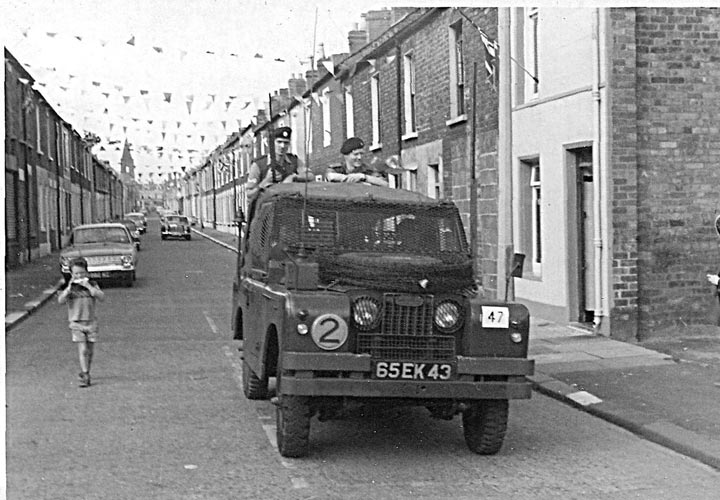1969 Rioting in Belfast

British troops in Belfast
On August 14, 1969 rioting broke out in Belfast Northern Ireland.The Rioting continued for three days between Catholics and Protestants. Eight Catholics were killed and 236 people were wounded. The British sent in the army in an effort to keep order in Northern Ireland..
The roots of the unrest can be traced back to the political and religious divisions that had long been present in Northern Ireland. The Protestant-majority Unionist community sought to maintain the region's status as part of the United Kingdom, while the Catholic-minority Nationalist community desired a united Ireland, free from British rule. The civil rights movement that emerged in the 1960s sought to address systemic discrimination faced by the Catholic community in areas such as housing, employment, and voting rights. The movement's protests and marches were met with hostility from many Unionists, who saw them as a threat to the Protestant-dominated status quo.
Tensions came to a head in the summer of 1969. On August 12, the Apprentice Boys, a Protestant fraternal organization, held their annual parade in the city of Derry. The event led to clashes between the police, the Protestant community, and Catholic residents. These incidents, known as the Battle of the Bogside, saw the deployment of petrol bombs and other improvised weapons. The situation in Derry prompted widespread civil unrest and protests across Northern Ireland.
In Belfast, the unrest began on August 14 when a group of Loyalists attempted to burn down a Catholic-owned pub in a predominantly Protestant area. In response, Catholic and Protestant gangs engaged in a series of retaliatory attacks, leading to widespread rioting throughout the city. The violence quickly spiraled out of control, with petrol bombs and gunfire exchanged between the two communities.
The Royal Ulster Constabulary (RUC), the police force in Northern Ireland, struggled to contain the rioting, and their actions during the unrest were heavily criticized. The RUC, primarily composed of Protestants, was seen as biased against Catholics, and their use of force was disproportionately directed at the Catholic community. This perception only served to inflame tensions further.
The British government, alarmed by the escalating violence, decided to deploy British troops to Northern Ireland on August 14. Initially, the troops were welcomed by the Catholic community, who saw them as protectors against the violence perpetrated by Loyalist mobs and the RUC. However, this perception would change over time as the British Army became more deeply involved in the conflict.
The rioting in Belfast resulted in significant loss of life and property. Over the course of the three days, at least eight people were killed, including three children, and hundreds more were injured. The riots also led to the widespread destruction of homes and businesses, particularly in Catholic neighborhoods. The worst-hit areas were the Falls Road and Ardoyne districts, where hundreds of homes were burned to the ground.
In the aftermath of the riots, a process of "peace walls" construction began in Belfast, aimed at separating Catholic and Protestant communities and preventing further violence. These walls, made of concrete and steel, effectively divided the city and reinforced the existing sectarian divisions. Although intended to be temporary, many of these barriers still stand today.
The 1969 Belfast riots marked the beginning of a protracted and bloody conflict known as "The Troubles." Over the next three decades, the violence claimed the lives of more than 3,500 people, with thousands more injured. The unrest exposed the deep sectarian divisions within Northern Ireland and set the stage for the long and difficult process of peacebuilding that followed.
 >
>